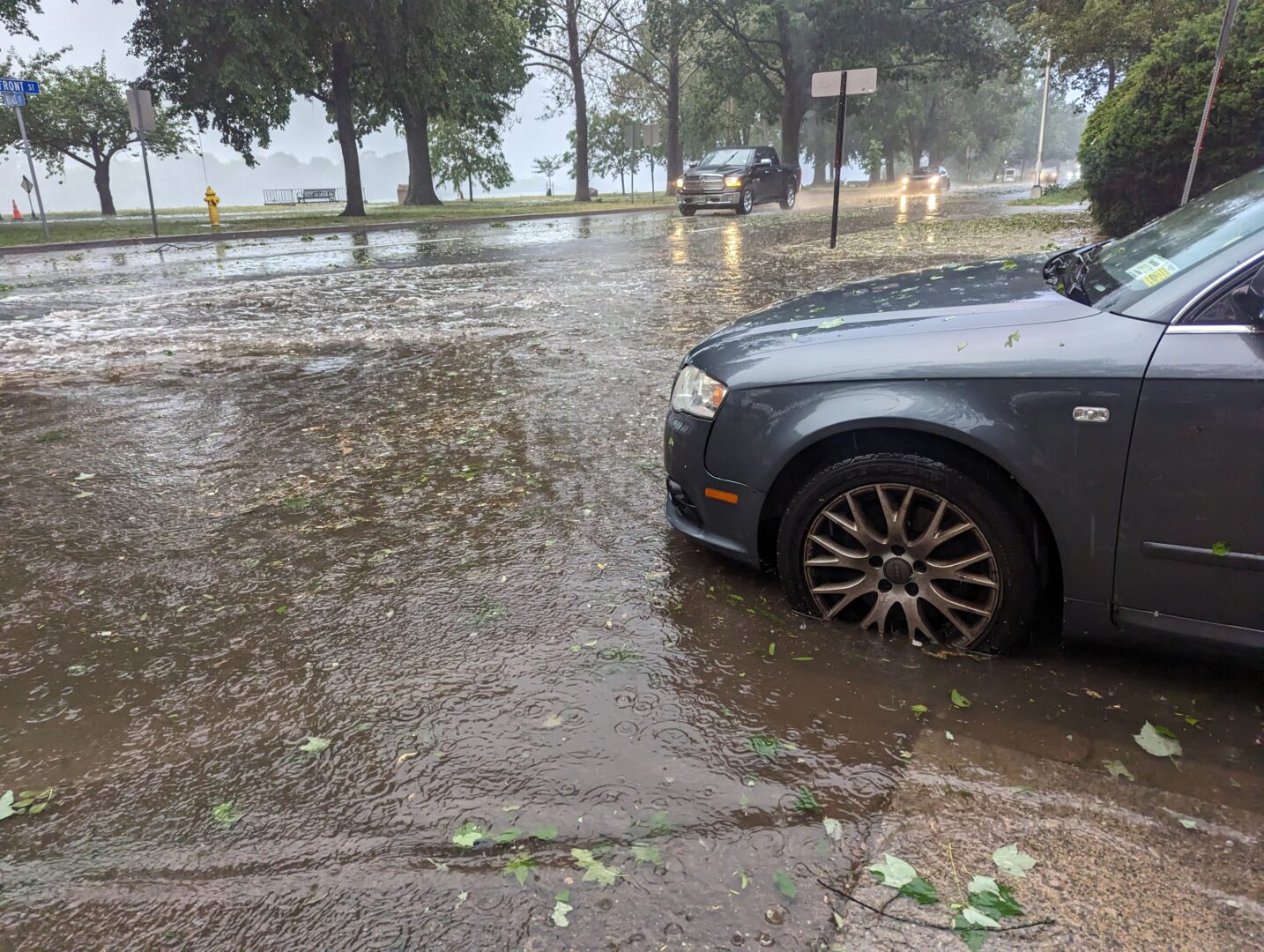
A thunderstorm in Harrisburg on June 3, 2023 caused minor flooding on Front Street at Boas Street.
Rachel McDevitt / StateImpact Pennsylvania


A thunderstorm in Harrisburg on June 3, 2023 caused minor flooding on Front Street at Boas Street.
Rachel McDevitt / StateImpact Pennsylvania

Rachel McDevitt / StateImpact Pennsylvania
A thunderstorm in Harrisburg on June 3, 2023 caused minor flooding on Front Street at Boas Street.
Pennsylvania’s severe rainstorms are more extreme than they were decades ago.
A report from the nonprofit science communication group Climate Central says climate change is causing the heaviest storms in Pennsylvania and other northeastern states to drop 60% more rain than they did six decades ago.
That’s because a warmer atmosphere can hold more moisture, which can fuel heavy rain events and flash floods.
Climate Central determined the figure by looking at total precipitation totals on the heaviest 1% of days across the country, as found in the U.S. Global Change Research Program’s Fifth National Climate Assessment.
Greg Carbin, chief of forecast operations at the National Weather Service Weather Prediction Center, was not involved in the report. He said it’s helpful to think of the atmosphere as a series of streams, not as a sponge.
“This constant supply of water vapor stays out there. It’s not like it gets used up in any one event,” he said. That means more water is available to feed into storms.
Carbin said forecasters have relied on historic weather data to predict the strength of future storms, but changing conditions are making that harder to do accurately.
“How can we forecast an event that we’ve never forecast before?” Carbin said.
Carbin said it can be difficult to get people to recognize how dangerous a rain event is, but flooding can destroy homes, sweep away cars, and claim lives.
The remnants of Hurricane Ida in 2021 killed five people in Pennsylvania. Three people drowned; one after his car got stuck in a flooded creek. One died after a tree fell on her house.
A flash flood in Bucks County in July last year killed seven people. Near the same time, Antietam Middle Senior High School in Berks County was inundated with at least two feet of water. The school was not able to open to students for the 2023-24 school year.
Climate Central reports flood damage cost Pennsylvania nearly $2.8 billion in 2020. That could rise 8% by 2050 as global temperatures continue to rise.
Christine Kirchhoff, a civil and environmental engineering professor at Penn State who also was not part of the study, said communities need to rethink storm management. She said the management systems in place now were designed for conditions decades ago.
“What we might be thinking we need to adapt to today may change over time so we have to be able to not be paralyzed,” Kirchhoff said.
One solution, she said, could be infrastructure that can absorb and hold water during storms, rather than transporting all of it somewhere else.
Kirchhoff said both retrofits and smart stormwater management for new construction will be needed to help address an increase in rain and flooding.
StateImpact Pennsylvania is a collaboration among WITF, WHYY, and the Allegheny Front. Reporters Reid Frazier, Rachel McDevitt and Susan Phillips cover the commonwealth’s energy economy. Read their reports on this site, and hear them on public radio stations across Pennsylvania.
(listed by story count)
StateImpact Pennsylvania is a collaboration among WITF, WHYY, and the Allegheny Front. Reporters Reid Frazier, Rachel McDevitt and Susan Phillips cover the commonwealth’s energy economy. Read their reports on this site, and hear them on public radio stations across Pennsylvania.
Climate Solutions, a collaboration of news organizations, educational institutions and a theater company, uses engagement, education and storytelling to help central Pennsylvanians toward climate change literacy, resilience and adaptation. Our work will amplify how people are finding solutions to the challenges presented by a warming world.